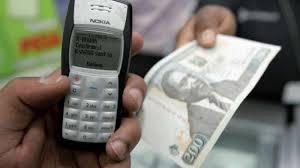
Many young and tech-savvy people are at an increased risk of ruining their credit scores and reducing future access to loans by falling for easy-come digital loans.
A study by the non-governmental Consultative Group to Assist the Poor (CGAP) says young people could be doing it for fun or short-term gain oblivious of the repercussions of being declared bad borrowers for defaulting on as little as Sh50 spent of airtime.
“The transaction data show that first-time borrowers are much more likely to default, which may reflect lax credit screening procedures. This can have potentially long-lasting negative repercussions when these borrowers are reported to the credit bureau,” it says.
It says lenders should be wary of borrowers applying for credit at between 1am to 2am terming them the worst defaulters.
“This is a worrisome side of digital credit that, at best, may help borrowers to smooth consumption but at a high cost and, at worst, may tempt borrowers with easy-to-access credit that they struggle to repay,” the report says.
About a quarter (25 per cent) of the digital borrowers who sought small loans were aged between 18 and 24 years and ended up defaulting, indicating that they were likely jobless and were seeking ‘cheap’ money to meet an immediate need without knowing where they will get money.
CGAP’s data says another 25 per cent of this group did pay, but about 16 per cent of this group borrowed from another digital lender to repay the first loan.
Various strategies were used to raise funds for repayment of debt with about 20 per cent reducing food consumption, 16 per cent borrowing to repay the loan while six per cent, notably students, used part of their school fees to settle loans.
The report proposes that regulations be put in place barring lenders from submitting the first-time defaulters’ names to the Credit Reference Bureau as this would dent their credit history and adversely affect their chance of ever getting a loan
According to Central Bank of Kenya data, as at March 2017, the volume of new mobile loans approved monthly by commercial banks had increased by 53 percent, while the value of new mobile loans approved monthly increased by 81 percent.
The regulator says that non-performing loans (NPL) ratio for digital loans extended by banks is consistently higher than that for the entire bank loan portfolio, pointing to high risk of default and eventually blacklisting.
In 2016, the NPL ratio for bank digital loans averaged 26.98 per cent as compared to 8.53 percent for all bank loans.In 2017, NPL ratio for digital loans dropped to 11.4 per cent, which is still higher than the 9.69 per cent NPL ratio for all bank loans.

